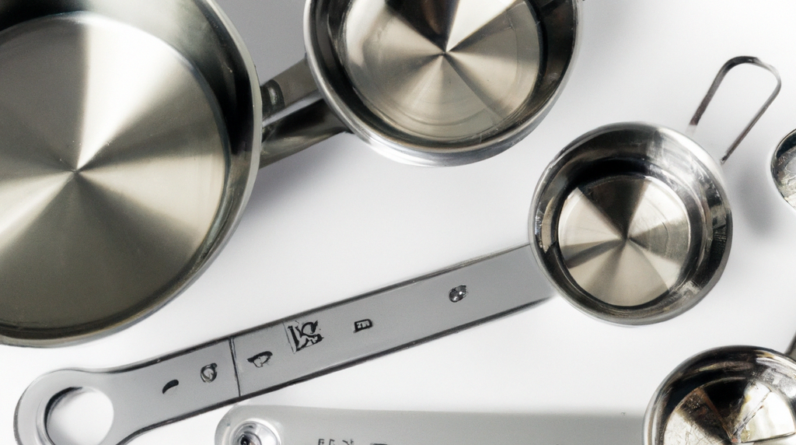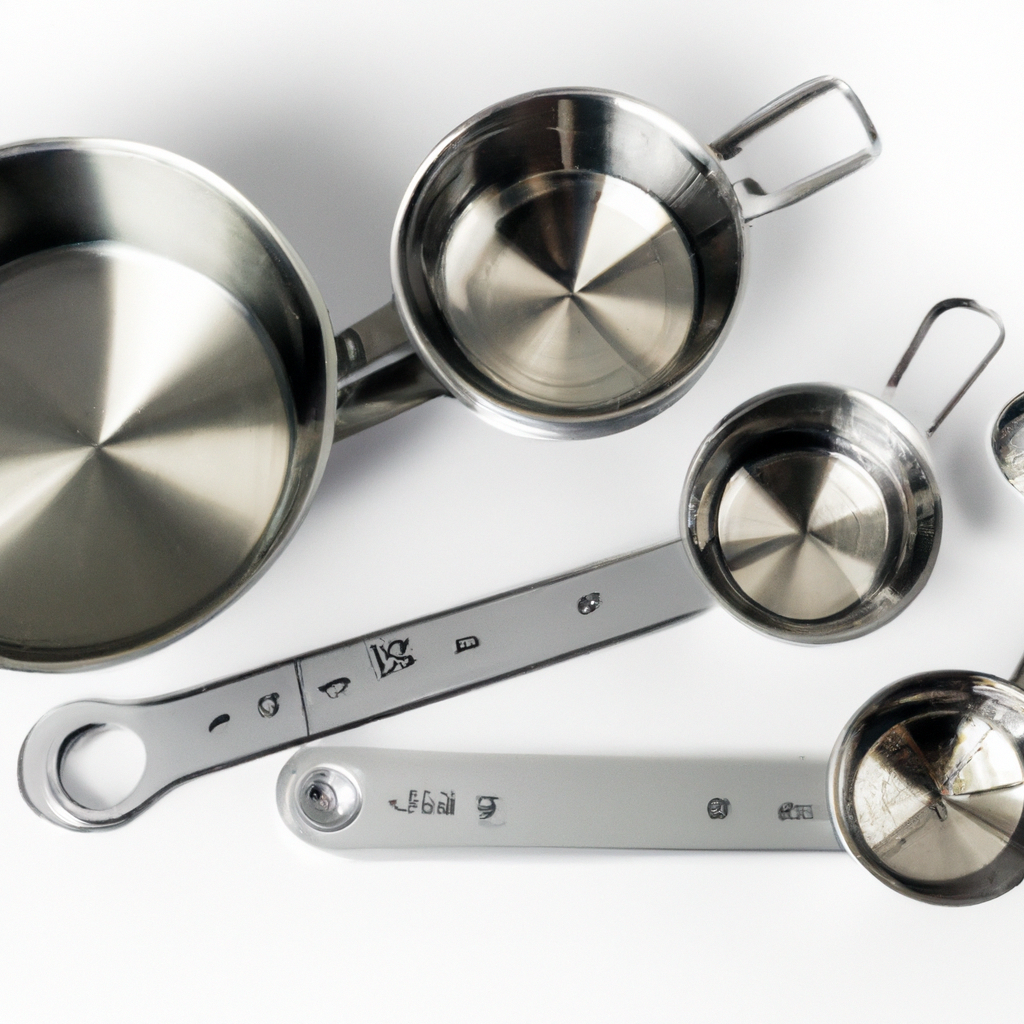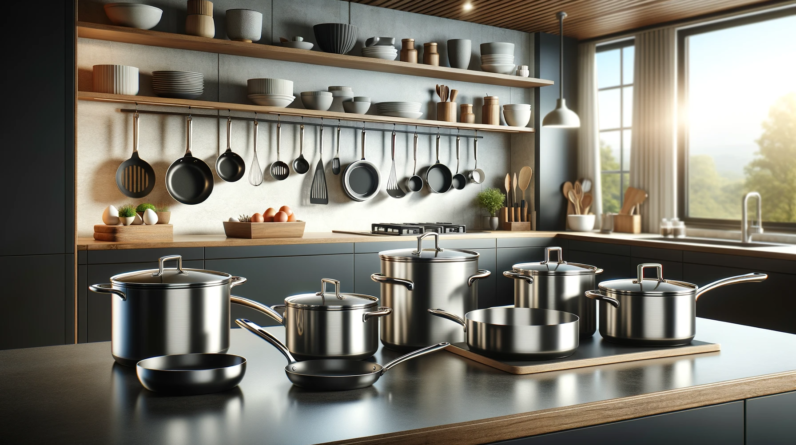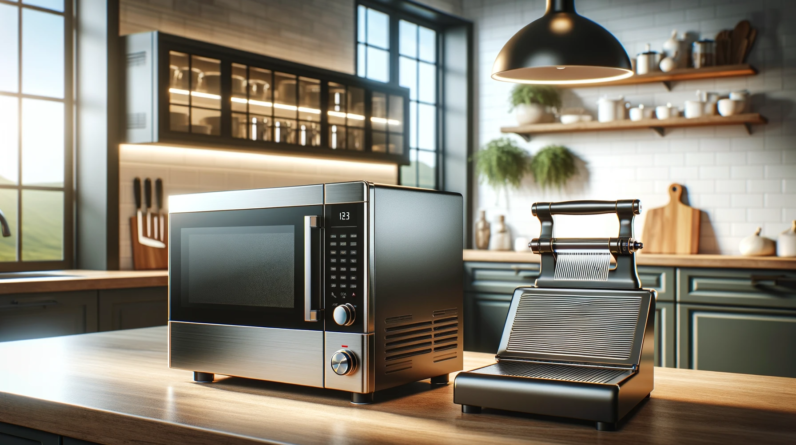
Disclaimer: This post may contain affiliate links. As an Amazon Associate, we earn from qualifying purchases.
In the world of cooking, precision is key. To ensure that your culinary creations turn out just right, it is essential to have the right measuring tools at your disposal. From a simple measuring cup to the more sophisticated kitchen scale, these tools are your trusted companions in achieving perfectly balanced flavors and textures.
In this post, we will explore the five essential measuring tools every aspiring chef should have in their kitchen arsenal. So, get ready to elevate your cooking skills and take your recipes to the next level of deliciousness!

Measuring Spoons
Measuring spoons are an essential tool in any kitchen. They come in a variety of sizes, allowing you to accurately measure small amounts of both dry and liquid ingredients. Common sizes for measuring spoons include 1/4 teaspoon, 1/2 teaspoon, 1 teaspoon, and 1 tablespoon. Having a set of measuring spoons ensures that you can easily measure ingredients in precise quantities, which is crucial for achieving consistent and delicious results in your cooking and baking endeavors.
Sizes of Measuring Spoons
Measuring spoons come in different sizes to accommodate various measurements. The smallest size is typically 1/4 teaspoon, which is ideal for measuring small amounts of spices or flavorings.
The next size up is 1/2 teaspoon, followed by 1 teaspoon, which is a standard measurement for many recipes. Lastly, there is the 1 tablespoon size, which is larger and useful for measuring larger quantities of ingredients like oils or honey.
Having a variety of sizes allows for flexibility in your cooking, ensuring that you can accurately measure ingredients in the quantities specified by the recipe.
Materials of Measuring Spoons
Measuring spoons can be found in a variety of materials, including stainless steel, plastic, and even silicone. Stainless steel is a popular choice due to its durability and resistance to corrosion, making it a long-lasting option for your kitchen.
Plastic measuring spoons are lightweight and often come in vibrant colors, making them fun and easy to spot in your drawer. Silicone measuring spoons are heat-resistant and flexible, making them ideal for use with hot liquids or sticky ingredients that can cling to the spoon. Consider your personal preferences and needs when choosing the material of your measuring spoons.
Measuring Cups
Similar to measuring spoons, measuring cups are essential tools for precise cooking and baking. They allow you to measure both dry and liquid ingredients in specific quantities, ensuring that your recipes turn out just right. Measuring cups come in various types and materials to suit different preferences and cooking needs.
Types of Measuring Cups
 There are two main types of measuring cups: the graduated measuring cup and the scoop-style measuring cup. Graduated measuring cups are typically made of transparent glass or plastic and have measurement markings on the sides. These cups come in various sizes, such as 1 cup, 1/2 cup, 1/3 cup, and 1/4 cup, allowing for accurate measurement of both larger and smaller quantities.
There are two main types of measuring cups: the graduated measuring cup and the scoop-style measuring cup. Graduated measuring cups are typically made of transparent glass or plastic and have measurement markings on the sides. These cups come in various sizes, such as 1 cup, 1/2 cup, 1/3 cup, and 1/4 cup, allowing for accurate measurement of both larger and smaller quantities.
Scoop-style measuring cups, on the other hand, have a specific volume capacity and are often used for dry ingredients. These cups are designed with a straight edge that allows you to level off the ingredient for precise measuring. Choose the type of measuring cup that best suits your needs and cooking style.
Materials of Measuring Cups
Measuring cups are made from various materials, including plastic, glass, and stainless steel. Plastic measuring cups are lightweight, affordable, and are often stackable for easy storage. Glass measuring cups are heat-resistant, allowing you to measure hot liquids without worrying about damage.
Stainless steel measuring cups are durable, resistant to corrosion, and have the added benefit of retaining their shape even after heavy use. Consider the material that best suits your kitchen preferences and needs.
Kitchen Scale
A kitchen scale is a valuable tool for any serious cook or baker. It provides an accurate measurement of ingredients by weight, which is especially useful when working with precise recipes or international measurements. By using a kitchen scale, you can ensure consistency in your cooking and baking, resulting in perfectly balanced flavors and textures.
Types of Kitchen Scales
There are two main types of kitchen scales: analog and digital. Analog kitchen scales operate using a spring mechanism that measures the weight of the ingredients placed on the scale’s platform. These scales are straightforward to use and do not require batteries.
Digital kitchen scales, on the other hand, provide a more precise measurement and often come with additional features such as a tare function, which allows you to reset the scale to zero after placing a container on it. Digital scales are battery-powered and may offer greater versatility in terms of measurement units and weight capacity.
Choose the type of kitchen scale that best suits your needs and budget.
Digital vs. Analog Kitchen Scales
 When comparing digital and analog kitchen scales, there are a few factors to consider. Digital scales offer more precision in measuring ingredients, typically displaying measurements in decimal points or fractions, whereas analog scales may have more limited increments.
When comparing digital and analog kitchen scales, there are a few factors to consider. Digital scales offer more precision in measuring ingredients, typically displaying measurements in decimal points or fractions, whereas analog scales may have more limited increments.
Digital scales also tend to have larger weight capacities, making them suitable for larger quantities of ingredients.
Additionally, digital scales often feature a tare function, allowing you to measure ingredients directly into a bowl or container without having to subtract the weight of the vessel.
On the other hand, analog scales are often more straightforward to use and do not require batteries.
Ultimately, the choice between a digital or analog kitchen scale depends on your personal preferences and the specific needs of your cooking and baking endeavors.
Liquid Measuring Cup
When it comes to measuring liquids, a liquid measuring cup is a must-have tool. Unlike regular measuring cups, which are designed for dry ingredients, liquid measuring cups are specifically designed to accurately measure liquids such as water, milk, oil, or stock.
They usually have a spout and a handle, making it easy to pour and measure liquids without spills or accidents.
Types of Liquid Measuring Cups
Liquid measuring cups come in various sizes and designs. The most common sizes are 1 cup, 2 cups, and 4 cups, offering flexibility when working with different quantities of liquid ingredients. Some liquid measuring cups feature measurements in both metric and imperial units, allowing for easy conversion between systems.
Others may have additional markings for common ingredient measurements such as tablespoons or ounces. Choose a liquid measuring cup that suits your needs and the quantities of liquids you typically work with in your recipes.
Measurements on Liquid Measuring Cups
Liquid measuring cups have markings on the side to indicate the volume of the liquid being measured. The measurements usually come in increments such as cups, ounces, milliliters, and pints. Each measurement is labeled clearly to ensure accurate measuring.
It’s important to note that when using a liquid measuring cup, you should always place it on a flat surface and view the measurement at eye level to ensure accuracy. The slight curvature of the liquid may affect the reading if not viewed from the correct angle.
With a liquid measuring cup, you can precisely measure the liquids needed for your recipes, ensuring the perfect balance of flavors and consistency in your dishes.
Measuring Jug
A measuring jug is another useful tool in the kitchen, especially for larger quantities of liquid ingredients. It typically has a larger capacity than a liquid measuring cup and is designed with a wide mouth for easy pouring and filling. Measuring jugs are often used in professional kitchens or for bulk cooking and baking purposes.
Uses of Measuring Jugs
Measuring jugs are primarily used to measure and hold larger quantities of liquid ingredients. They are especially useful when preparing soups, stocks, or sauces that require precise measurements. Measuring jugs often have clear and easy-to-read measurement markings, allowing you to accurately measure the volume of liquids without needing to transfer them to multiple cups or containers.
Types of Measuring Jugs
 Measuring jugs come in various sizes and materials. The most common sizes for measuring jugs include 1 liter, 2 liters, and 4 liters, with larger sizes available for commercial or industrial use. They are typically made from heat-resistant materials such as glass or plastic, allowing you to pour hot liquids without worry.
Measuring jugs come in various sizes and materials. The most common sizes for measuring jugs include 1 liter, 2 liters, and 4 liters, with larger sizes available for commercial or industrial use. They are typically made from heat-resistant materials such as glass or plastic, allowing you to pour hot liquids without worry.
Measuring jugs made from transparent materials are particularly beneficial, as they allow you to see the measurement markings clearly, ensuring accurate measurements each time.
So having the right measuring tools in your kitchen is essential for achieving consistent and delicious results in your cooking and baking adventures. Measuring spoons and cups provide precise measurements for both dry and liquid ingredients, while kitchen scales offer accuracy when measuring by weight.
Liquid measuring cups and jugs are designed specifically for measuring liquids, allowing you to accurately measure larger quantities. Consider the different types, sizes, and materials available for each measuring tool to find the ones that best suit your needs and preferences.
With these measuring tools at your disposal, you’ll be well-equipped to tackle any recipe with confidence and precision. Happy cooking!





